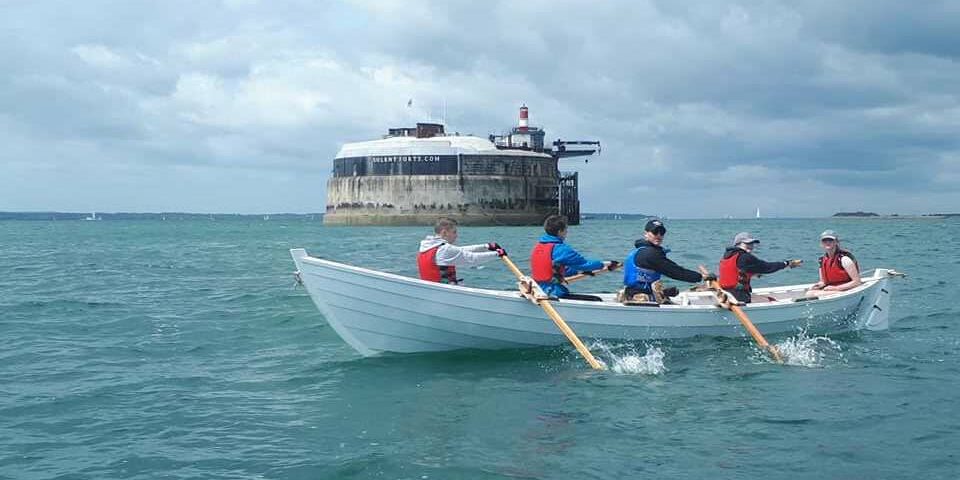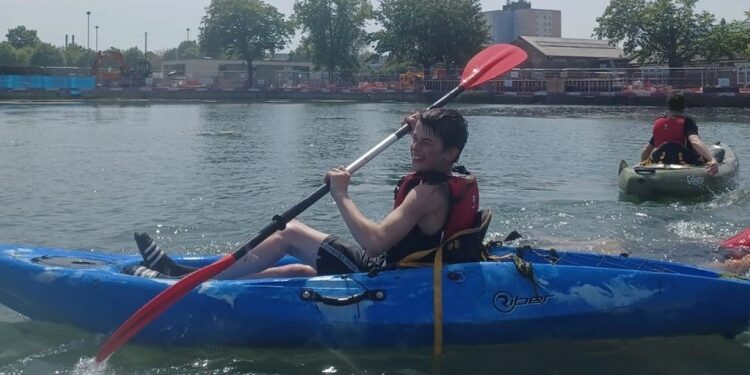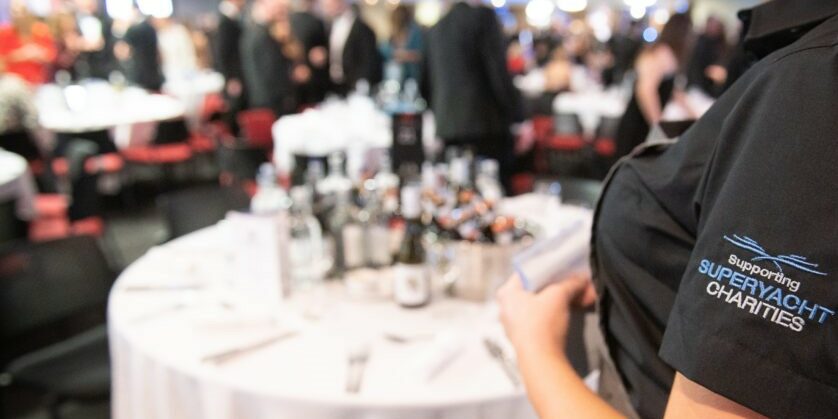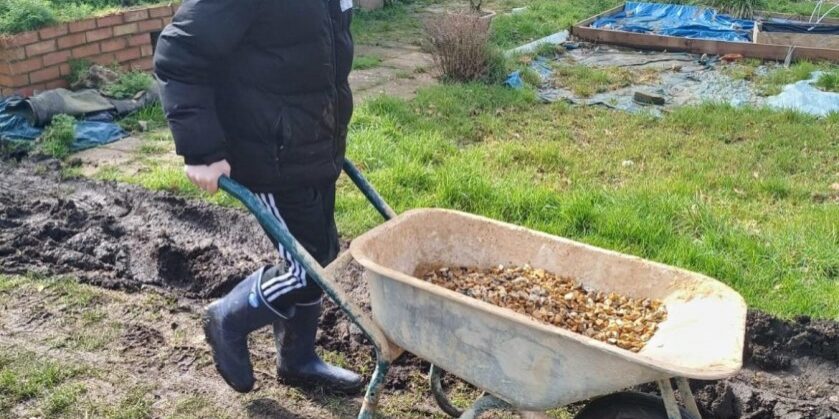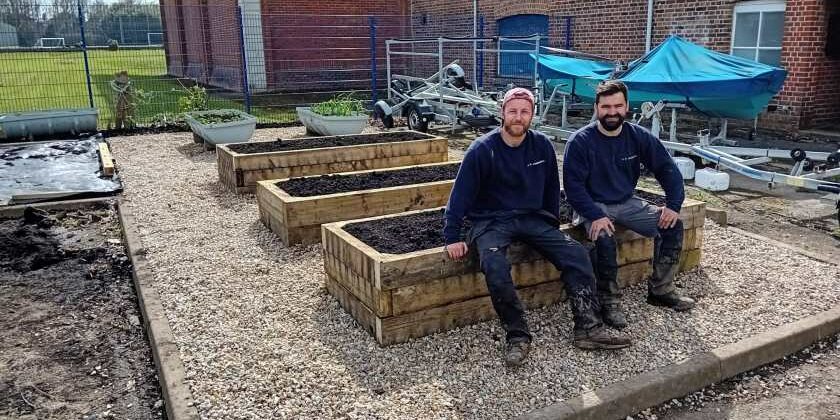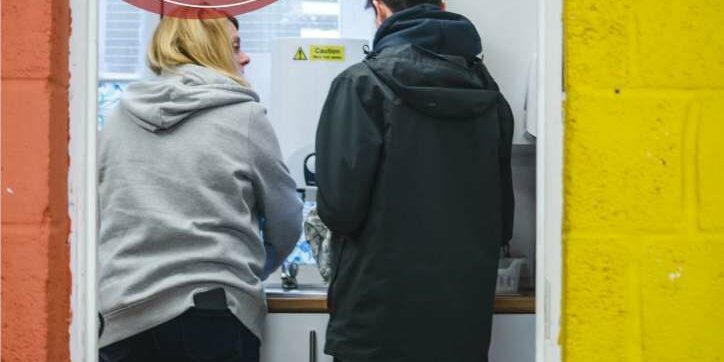John Gillard, Oarsome Chance Principal, led a Silver Award expediton for a group of students working on their Duke of Edinburgh Award. The group has been training with Oarsome Chance over the preceding months and took on the challenge over three days, from 27th to 29th May.
The students faced quite a challenge, covering 24 nautical miles rowing in Skiffs in difficult weather conditions, but they showed great determination and resilience in completing the task. Here’s John’s expedition report:
“The crews launched the skiffs from Haslar Lake around 1030 on day one and were motivated and showed good teamwork and communication. They had trained hard for this and also completed a practice expedition and had learnt a lot in the meantime. The weather was overcast and wind force 2-3 from the south west, so behind them and tide was starting to flood. The crews sat off Haslar Bridge and warmed up by getting into stroke and practicing manouvers while safety boats did final checks and safety briefs – by 1100 they were all underway.
Having completed their RYA Essential Seamanship and Navigation course as part of the training, the students were all prepared to go to sea and navigate through Portsmouth Harbour’s very narrow, very busy and very tidal entrance, which they managed with ease. Their next leg was critical in both seamanship and navigation as they needed to stay out of the main shipping channel and keep the red buoys to port to make their way out into the small ships channel and into the Solent. Both crews really got their heads down and into stroke with coordination – with teamwork being of the essence they were able to really start powering on the first leg and made good time to the bend in the channel where they must observe shipping in both directions before crossing as quick as possible at a 90 degree angle. This was navigated successfully and the crews then made their way towards the small ships channel (gap through the submarine barrier) and the team in skiff Little Warrior took the lead and set the pace, stopping regularly to check crew welfare and rehydrate.
Next came the quieter leg towards the Langstone Harbour fairway buoy, avoiding the hidden shallows and overfalls if they cut the corner as the boats turned into the channel, the wind had picked up to a force 3-4 and was on the beam (side of the boat) which induces an uncomfortable roll and makes it hard to row as the oars are higher on the top of a wave making it difficult to put into the water and a lot lower as the wave passes making it hard to get them out again and risking catching a crab (where the momentum on the oar forces the rower backwards off their seat). The boats were also being blown sideways towards the winner bank sand spit and had to show great control and effort to keep themselves in the main channel which, despite some seasickness and difficulty, both crews managed well after a certain amount of trial and error. Once in the harbour entrance proper, the seastate calmed down and they had an enjoyable last mile towards the beach in front of the Harbour Master’s office and their destination for the day, all feeling a great and well deserved sense of achievement and ready to make camp for the evening.
Day 2 on the water, started from where they left off on the beach on Hayling Island, observed by head of Duke of Edinburgh South East and the forecast was a steady force 3-4 south west, overcast with occasional showers. The day’s route was inshore (2 harbours) using the Langstone channel (once they’d found it) so more navigation focus. Starting at low water it was imperative that they stayed in the deep water and followed the starboard channel markers around up to the Langstone Bridge and into Chichester Harbour. The crews were slower today as they put more emphasis on careful navigation which saw them stop regularly to check the chart and position. They managed to make safe passage to the Langstone Bridge and mastered a tricky exercise in finding deep water around the sandbanks through to pilotage and a pitstop in Northney Marina.
Leg 2 was upwind and up tide although flat water made for a long and tough leg through vicious rain squalls and knowledge that if the whole crew stopped rowing, the skiff would travel backwards. The tough leg was broken up by the sight of visiting and curious seals popping up and down to say hello. With the last big push on effort and lots of smiles, the crews arrived at West Wittering and beached the boats for the walk ashore to set up camp for the evening.
Day 3 is known as big Wednesday as it is the coastal leg home up the Solent and although the tide would be going in the right direction, the potential for a brisk breeze against them and a choppy sea. The key to day 3 was an early start before the sea state and wind built up and so the crews were ready to cast off at 0800. As they crossed the spit at the top of the tide it was like rowing in a washing machine for the crews with an uncomfortable roll and loll forwards, backwards and side to side making for slow progress. The crews picked the flattest looking path through and rowed as consistently as possible. Once through the worst of it, the sea flattened out a little and they had a respite, before the breeze started to build as the front passed across, bringing rain squalls – this forced the crews to dig deep and really tested their physical and mental strength. As the sea state got lumpier, a couple of the crew suffered from seasickness and most began suffering fatigue and all of the students had to pull out everything they had in reserve to keep the skiff moving through the swell. They managed to navigate through the swell and shallows off Winner Bank, past Langstone Harbour and to the gap in the submarine barrier. Portsmouth Harbour entrance was then truly in sight and was a real boost for crew moral as they crossed the shipping channel, into the small ships lane their competitive streak coming out again as they rode for home.
The crews arrived back at Haslar Lake at approximately 1500 hours and formed 2 teams to take the boats out of the water and onto the trailers to clean and put to bed after completing the 24 nautical mile course over 3 very different and equally testing days with a great sense of personal achievement, pride and satisfaction. Not only achieving their Duke of Edinburgh Silver Award but also their RYA Essential Navigation and Seamanship qualification and most importantly, incredible skills for life.”
